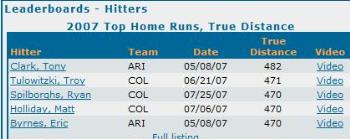No surprise here. Jake Peavy won the NL Cy Young. And almost as much expected, it was unanimous.
But what might be a little unusual (but certainly warranted) was that Arizona’s Brandon Webb almost got second place with an almost unanimous vote. He got 31 of 32 second place votes. That essentially left seven pitchers to divvy up the third place vote with Aaron Harang getting the last second place vote. Ironically though, it was Brad Penny who received the most votes of the remaining seven, not Harang.
Carrie Muskat, the Cubs.com beat reporter, reported that Zambrano came in fifth in the Cy Young. Unfortunately, fifth place meant he only got 3 votes.
One last note… The Hardball Times notes that Webb actually had more pitching win shares than Peavy did in 2007.
